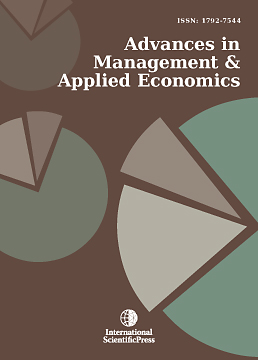Advances in Management and Applied Economics
The Exchange Market Contagion in an Asymmetric Framework before and after Abenomics
-
 [ Download ]
[ Download ]
- Times downloaded: 10275
-
Abstract
This study analyzes the contagion caused by the currency depreciation war in a multivariate time varying asymmetric framework, focusing on countries competing with Japan for trade during the Abenomic period. We employed not only the linear models of Engle and Granger (1987), and the Johansen (1988) co-integration models but also the Enders and Siklos (2001) asymmetric threshold co-integration model to investigate whether the contagion effects between Japanís exchange rate market and the exchange rate markets of major countries in completion with Japan for export markets before and after Abenomics for the period 2011-2014 existed. The empirical evidence confirms a contagion effect particularly in Asian countries where there is export competition with Japan with the exception of South Korea during Abenomics. The contagion of the Japanese yen depreciation is not transmitted to Australia, the Euro zone (France, Germany, Italy, and Netherlands), Qatar, Saudi Arabia, and USA in competitive trade with Japan. We can apparently find the effect of yen devaluation only occurred in the region of Asia close to Japan and does not spread Europe and America. In general, our results support the contagion phenomenon for Abenomics. Nevertheless, the effect of the contagion is regional not global.
